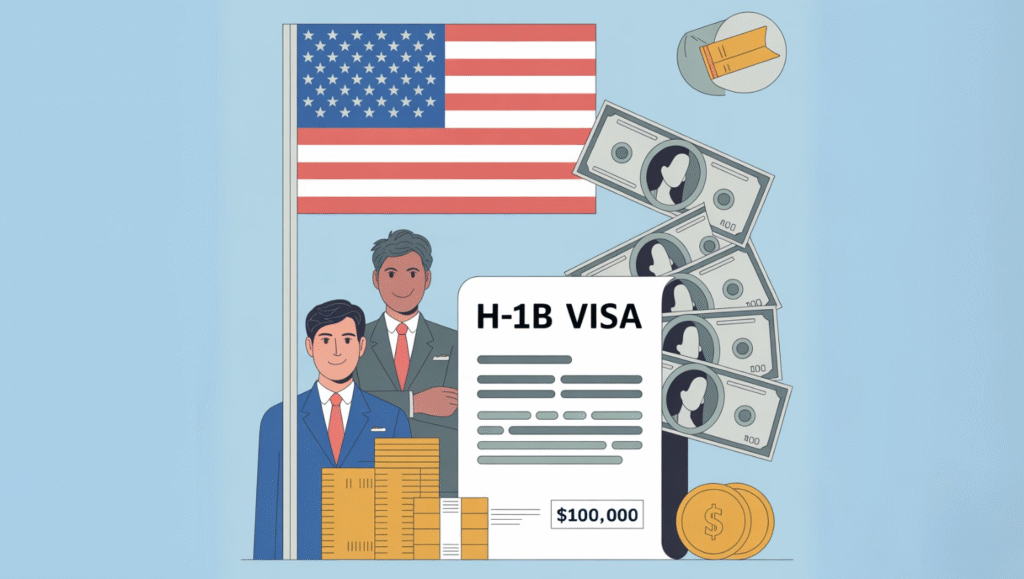Trump Imposes $100,000 Fee on H-1B Visas
Syllabus: International Relations (UPSC Prelims)
Source: NDTV
Why in News?
US President Donald Trump signed a proclamation imposing a $100,000 fee on H-1B visa sponsorships, sharply increasing the cost for American firms hiring foreign skilled workers.
About the Policy
- Fee Increase: Employers must now pay $100,000 per H-1B applicant, up from a few thousand dollars earlier.
- Objective: Reduce misuse, hire only highly skilled professionals, and protect American workers from wage displacement.
Implications for India
- Higher Costs: Indian IT firms like Infosys, Wipro, and TCS face increased compliance costs, potentially reducing hiring.
- Brain Drain: Indians hold 71% of H-1B visas; higher fees may limit opportunities for mid-level talent.
- Business Shifts: Could push outsourcing back to India or encourage nearshoring to Canada or Mexico.
- Automation Push: US firms may invest more in AI and automation to offset expensive foreign labour.
About the H-1B Visa
- Definition: Non-immigrant visa allowing US employers to hire foreign workers in specialty occupations needing technical expertise.
- Purpose: Fill skilled workforce shortages in IT, STEM, finance, medicine, while ensuring fair wages.
Key Features:
- Eligibility: Bachelor’s degree or equivalent required.
- Duration: Valid for 3 years, extendable to 6 (longer if Green Card process initiated).
- Quota: 65,000 visas annually + 20,000 for US Master’s degree holders.
- Employer-Sponsored: Petition must be filed by US-based employer to USCIS.
- Equal Pay: Employers must pay prevailing wages to avoid labour exploitation.
India and H-1B
- Major Beneficiary: Indians receive ~71% of all H-1B visas.
- Top Users: Amazon (12,000+ in 2025), Microsoft, Meta, Google.
- Economic Role: Supports $150+ billion IT export industry and remittances.
- Challenges: Long Green Card backlog for Indians; wait times often exceed 10 years.
Conclusion
The new $100,000 H-1B fee could significantly impact Indian IT companies, reduce mid-level migration, and accelerate automation in US firms. It may also reshape global talent flows and outsourcing strategies.











